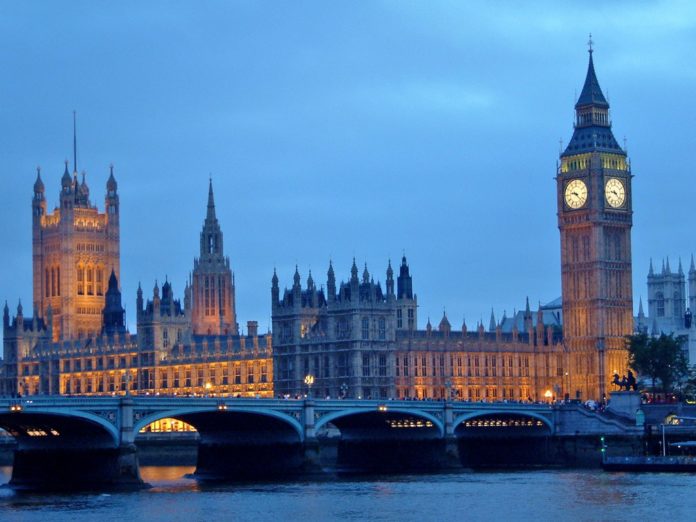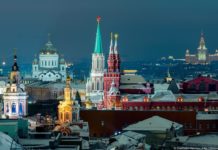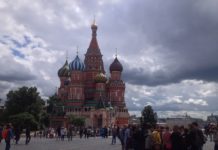BY IRINA MARTIN
Introduction
The events of spring 2014 and Russia’s attempts to dismember Ukrainian state will mark an important milestone in the relations between Russia and the West. This historical episode presented a wider security issue for Russian European neighbours and challenged the international relations legal framework worldwide. The Ukrainian crisis brought the already tense relations between Russia and its western counterparts to a serious aggravation. The crisis that started as a reaction to the corrupt policies of the Ukrainian elites degenerated into a coup and overthrow of the legitimately elected government, seizure of power, chaos and civil war in the east of Ukraine. As security of neighbouring states has been compromised, both Russia and the NATO alliance began to resort to more aggressive actions. This lead to Jens Stoltenberg, Secretary General calling on NATO member states in 2015 to increase defence spending in response to Russia’s aggression in Ukraine. 1
The decision to increase NATO spending was derived from the assumption of the international community that Crimean annexation and current events in Ukraine “pose a challenge for Russian neighbours and potentially for the wider European security order of a greater magnitude than anything since the end of the Cold War.” 2 Roy Allison, Professor or Russian and Eurasian International Relations at Oxford University stated that “…Russia may be ready to stake out a wider legal normative challenge to western states beyond the clashes in spring and summer 2014. 2
Since, international relations scholars as well as practitioners have been trying to come up with the explanations of Russian aggressive behaviour towards Ukraine at the time when Ukrainian people are desperate to make a peaceful transition to democracy.
The Ukrainian crisis bears political, social, economic and cultural characteristics and was predetermined by the failing governance over Ukraine’s 23 years of independence. Systemic failings in the attempts to build a post-soviet Ukrainian national identity on the territory that never previously existed in its current borders until 1954 have brought the country to collapse.
The current territory of Ukraine went through a series of land additions and deductions and had been fully formed in its current borders by the Soviet state that often acted out of manipulation or pure pragmatism by joining or separating territories within the boundaries of the Soviet Union in its own interests. In the case of Ukraine such conversions lead to the artificial unification of multicultural and multi-ethnic groups and territories into one state.3 “However, being a Soviet project, this identity was, to a certain degree, conventional, and in any case, secondary to the Soviet identity, which, in one way or another, had a unifying nature that steamrolled all internal differences”3. Arguably, modern Ukrainian statehood has no authenticity being a very young evolving, weak state with its teething problems that have been magnified by both Russia and the West trying to pull Ukraine into one’s own sphere of influence.
In 2013 Putin’s geoeconomic moves, including the price drop of natural gas from $400 to $268.5 per 1,000 cubic metres encouraged the Ukrainian government to suspend talks with the EU in favour of strengthening and enhancing its economic relationship with Russia.4 Following a meeting with Putin in Moscow in November 2013, President Yanukovych announced that Ukraine would not sign the Association Agreement it had been negotiating with the EU as part of the EU’s Eastern Partnership. 5 A few months later Russia declared that it would purchase $15 billion in Ukrainian government bonds. 4 Russian elites aimed to weaken Ukraine’s power as a key transit state with South Stream and tie Ukraine to Putin’s ‘Eurasian’ project through the Russia-led Customs Union.6 The move became highly politicised in Ukraine and ignited the protested movement that eventually lead to Yanukovych’s ousting.
Triggering factors
For over two decades, since the end of the Cold War and Ukraine’s proclamation of its independence in August 1991 Ukraine has been a peaceful state located in a sensitive geographical position between Russia and its western neighbours. As the legacy of the old empirical rule lingered over the country that never existed in its current borders and since the 13th century has been a territory split into sections under various protectorates including the Mongol hordes, Great Principality of Poland-Lithuania, Austro-Hungarian and Russian Empires with ever changing borders between them, modern Ukraine found itself pulled in two opposite directions: Russia that has been heavily exerting its influence from the East and the European Union trying to bring Ukraine into its orbit. When president Yanukovych rejected the deal on the EU Association Agreement where Ukraine would have become closer to the EU bearing important economic implications for Ukraine, it lead to mass protests on the streets of Kiev, “eventually becoming the large-scale demonstrations known as the Euromaidan movement that culminated in Yanukovich’s ouster in February 2014. The scale and intensity of the protests were unmatched by any in Ukraine’s post-Soviet history.” 7
After three days of bloody clashes Polish, French and German foreign ministers arrived in Kiev on the 21st of February 2014 in order to work out a deal that would lead to the early presidential elections. The deal was agreed as Yanukovych realised that he would most likely lose those elections. The deal proposed the removal of Yanukovych in a democratic way. Both Yanukovych and the opposition agreed, however, the protestors rejected the deal demanding immediate removal of Yanukovych and his cabinet. Violence broke out and was perpetrated on both sides, protestors and the government itself, and thus Yanukovych left for Russia. This left a void in the state’s governance as there was no President in place. On the 23rd of February Ukrainian parliament voted to repeal minority language laws in respect of the Russian language. On the 27th of February Russian military troops moved into Crimea.
Russian Foreign Policy Drivers
As international relations academia tries to establish the root cause of the conflict between Russia and Ukraine, attention needs to focus on a wider geopolitical picture and deep rifts within the constructed realities of Russia and the West. Ukrainian crisis is a natural product of the European security architecture formed after the collapse of the Soviet Union. The end of the Cold War was seen by NATO countries as the “victory of the West,” and provided an opportunity to impose western scope and patterns of behaviour on the territory previously governed by socialist principles. Russia, however, in view of its economic degradation of the 90s, welcomed the standards imposed onto it by the western world. Europe and the United States were confident that the former Soviet republics would be quickly incorporated into the western sphere of influence that was followed by the Baltic states’ accession to NATO and the EU and at the time did not cause any resistance from weak and disenfranchised Russian Federation. However, due to the economic growth of Russia in the 2000s and, as its foreign policy ambitions gradually increased, the move led to a natural conflict of interests with the members of the Alliance.
Although, some insist that Russian intervention in Crimea was unprecedented, the first serious clash between Russia and the West was the war in South Ossetia, when Europe and the United States condemned Russia’s actions in the conflict with Georgia, the essence of which was to prevent the further expansion of NATO to the East. This war indicated Russian willingness to use all of its resources, including force, to defend its security and keep the buffer zones intact. It follows that the Russian reaction to Euromaidan was to be expected: Russia would not want to allow Ukraine, Russia’s historic buffer zone, come into the western sphere of influence.
- Bendavid, Naftali, Just Five of 28 NATO Members Meet Defence Spending Goal, 22 June 2015, http://www.wsj.com/articles/nato-calls-for-rise-in-defence-spending-by-alliance-members-1434978193)
- Allison, Roy, Russian ‘deniable’ intervention in Ukraine: how and why Russia broke the rules, International Affairs 90: 6(2014) pp.1255-1297.
- The Crisis in Ukraine: root causes AND SCENARIOS FOR THE FUTURE, Valdai discussion club, Moscow, September 2014, http://vid-1.rian.ru/ig/valdai/ukraine_eng.pdf, last accessed 31 July 2016
- Russia Offers Ukraine Major Economic Assistance, BBC News, 17 December 2003
- Putin’s gambit: How the EU lost Ukraine’, Spiegel, 25 November 2013
- Barbashin, Anton, A Euroasian Union No More?, National Interest, 23 April 2014, http://nationalinterest.org/feature/eurasian-union-no-more-10296, last accessed 15 August 2016
- Chausovsky, Eugene, Ukraine: Caught Between East and West, 29 December 2015, Stratfor




